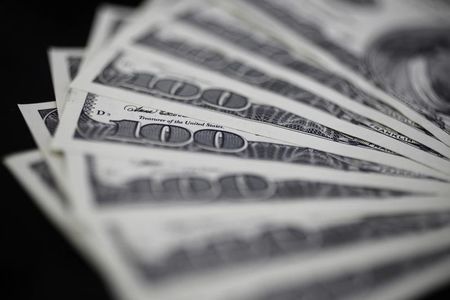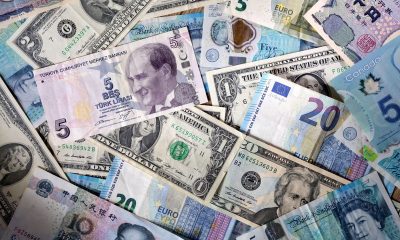Forex
Asia FX muted, dollar cools as Fed rate hike fears ease


© Reuters.
Investing.com– Most Asian currencies kept to a tight range on Monday, while the dollar fell slightly as mixed U.S. jobs data cemented bets that the Federal Reserve will keep rates steady this month, with focus now turning to more economic cues from China.
While data released on Friday read more than expected, the also rose, indicating some cooling in the U.S. labor market. This gives the Fed less headroom to keep raising rates, with markets now almost in September.
This notion put some pressure on the dollar on Monday, with the and falling 0.1% each in Asian trade. But the greenback still remained close to three-month highs.
While the prospect of steady U.S. rates heralds some relief for Asian markets, the Fed is also expected to keep rates higher for longer, limiting any potential gains in regional currencies.
A narrower gap between regional and U.S. interest rates also limits the appeal of Asian markets.
The and rose 0.1% each on Monday, as did the .
Chinese yuan flat with stimulus, property market relief in focus
The steadied in morning trade, supported chiefly by a series of strong daily midpoint fixes from the People’s Bank of China (PBOC).
But the outlook for the yuan remained weak, especially with the PBOC set to reduce interest rates further to stimulate economic activity. Chinese state-owned banks were also seen reducing yuan deposit rates last week, while also loosening mortgage rates.
Still, the PBOC also reduced foreign exchange reserve requirements for local financial firms, increasing dollar liquidity in the country and offering more support to the yuan.
Focus is now chiefly on more stimulus measures from Beijing to support the economy, as well as readings on service sector activity and trade. Sentiment towards China also improved after Country Garden Holdings (HK:), the country’s biggest property developer, was able to clinch an extension to its debt obligations, potentially avoiding a default.
Australian dollar firms with RBA pause in focus
The was among the best performers in Asia on Monday, rising 0.3% before a on Tuesday.
The central bank is widely expected to hold interest rates at an over 10-year high, given recent signs of cooling inflation and employment. The bank is also expected to announce no major policy changes with Deputy Governor Michele Bullock set to take over as Governor after Philip Lowe’s term ends later in September.
A Reuters poll showed that markets are still pricing in the possibility of a rate hike in the fourth quarter, given that inflation still remains relatively high.

 Forex3 years ago
Forex3 years agoForex Today: the dollar is gaining strength amid gloomy sentiment at the start of the Fed’s week

 Forex3 years ago
Forex3 years agoUnbiased review of Pocket Option broker

 Forex3 years ago
Forex3 years agoDollar to pound sterling exchange rate today: Pound plummeted to its lowest since 1985

 Forex3 years ago
Forex3 years agoHow is the Australian dollar doing today?

 Cryptocurrency3 years ago
Cryptocurrency3 years agoWhat happened in the crypto market – current events today

 World3 years ago
World3 years agoWhy are modern video games an art form?

 Commodities3 years ago
Commodities3 years agoCopper continues to fall in price on expectations of lower demand in China

 Economy3 years ago
Economy3 years agoCrude oil tankers double in price due to EU anti-Russian sanctions


























